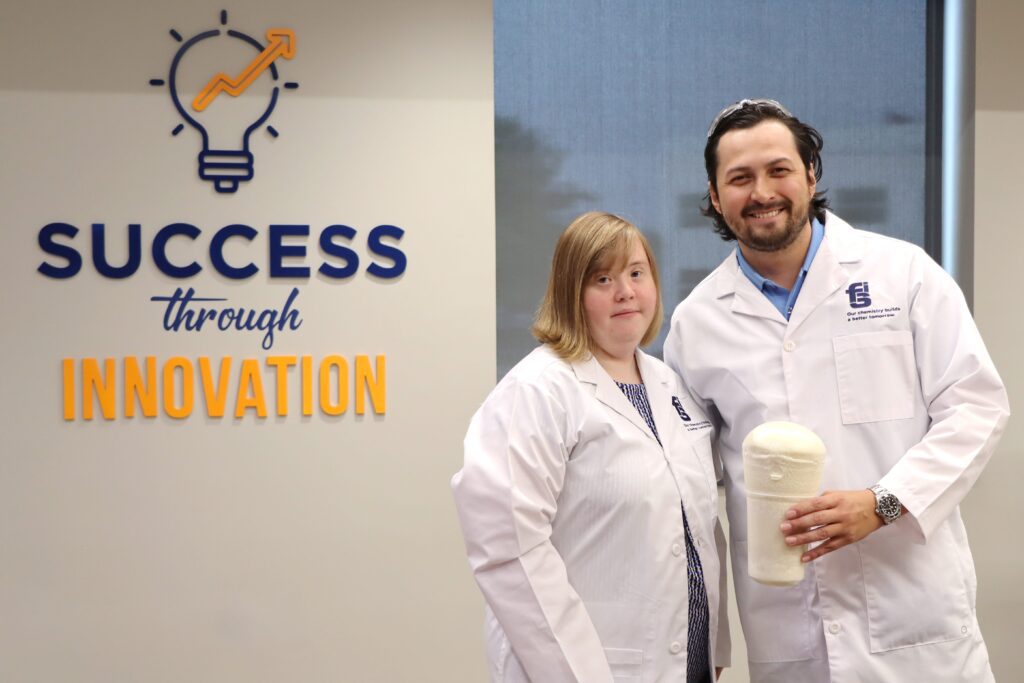As a leading polyurethane systems house, we develop sustainable chemical solutions for a wide range of industries.
Our chemistry builds a better tomorrow.
A World Leader in
Polyurethane Technology and Solutions
Unsurpassed Technical & Customer Service
We serve our customers at any level they require – from helping companies start foaming their products for the very first time, to developing intricate, specialized foam systems for others. With the largest traveling service team and longest tenured team, we’re the go to choice for polyurethane support.
Markets We Serve
A leading polyurethane systems house specializing in custom solutions and distribution.
Our chemists specialize in creating custom polyurethane systems that solve technical challenges, exceed environmental standards, and meet the demands of emerging markets. FSI collaborates with your team to deliver the ideal product, process, and equipment solutions, ensuring optimal product performance and immediate innovation.
Success Through Innovation
At FSI, “Success Through Innovation” isn’t just a slogan, it is our rolling history since our beginning in 1972. We have patented technologies to improve performance of polyurethanes ranging from advanced chemistry and blowing agent technologies to cutting-edge dispensing equipment & applications.

Ecomate® Blowing Agent Technology: Sustainable Performance Meets Environmental Standards
Since 2002, Ecomate has been field-proven as a successful alternative to environmentally harmful blowing agents in a wide range of applications, from energy-efficient insulation in consumer appliances to lightweight integral skin foam in automotive components.
Ecomate is:
- Free of HFCs, HCFCs and CFCs
- Proven in both rigid and flexible foam applications
- Seamless system conversion with no new permits required
Ecomate blown foams provide manufacturers with environmentally sustainable technology while achieving processing and product performance standards. Our proprietary solution is PFAS-Free, zero-GWP, non-VOC and meets the requirements of all applicable environmental regulations and agreements.
Polyurethane Foam: Common Questions and Expert Answers
What is the history of polyurethane?
Polyurethane was first discovered in 1937 by Otto Bayer and made commercially available in the 1950s. Initially used as a coating material, it has since revolutionized a broad range of industries with its flexibility and durability. It is now used in the production of insulation, foam mattresses, car seats, shoe soles, and more.
What is the chemical structure of polyurethane foam?
The chemical structure of polyurethane foam is based on the condensation reaction of an isocyanate and a hydroxyl-containing compound, usually a polyol. This reaction creates cross-linked molecules that form a flexible and durable foam when combined with a blowing agent.
How is polyurethane foam produced?
Polyurethane foam is produced through either a liquid injection foam or slabstock foam process, depending on the desired properties and intended use of the final product. Each method has its own advantages and disadvantages, so finding the right method for a specific application is key to achieving optimal results.
How strong is polyurethane foam?
The strength of polyurethane foam depends on various factors including density and formulation, but generally speaking it is known to be very resilient and durable material.
What is polyurethane used for?
Polyurethane foam can be used for applications ranging from cushioning, soundproofing, impact protection, energy absorption, thermal insulation, packaging materials and more.
Is polyurethane foam environmentally friendly?
Most types of polyurethanes are non-toxic and considered environmentally friendly compared to other materials such as oil-based plastics or foams made with CFCs (chlorofluorocarbons).
Are there any health risks associated with polyurethane foam?
Generally speaking there are no health risks associated with using polyurethane foams but some individuals may be sensitive to certain components such as diisocyanates which may cause irritation when handled without proper protective equipment.
What are the 2 main types of polyurethane foam?
Flexible foam, which is used mainly in cushioning and upholstery, and rigid foam, which is used mainly in insulation and structural support.
What is a polyurethane systems house?
Polyurethane systems houses provide comprehensive solutions for producing polyurethane chemical systems, utilizing state-of-the-art production processes and customized options to ensure projects are executed with precision and accuracy.
What They’re Saying
A Culture Dedicated to Supporting Our Community
Global Reach.
Tailored Support.
FSI serves manufacturers on an international scale with a sales, production and distribution network that spans the globe.







